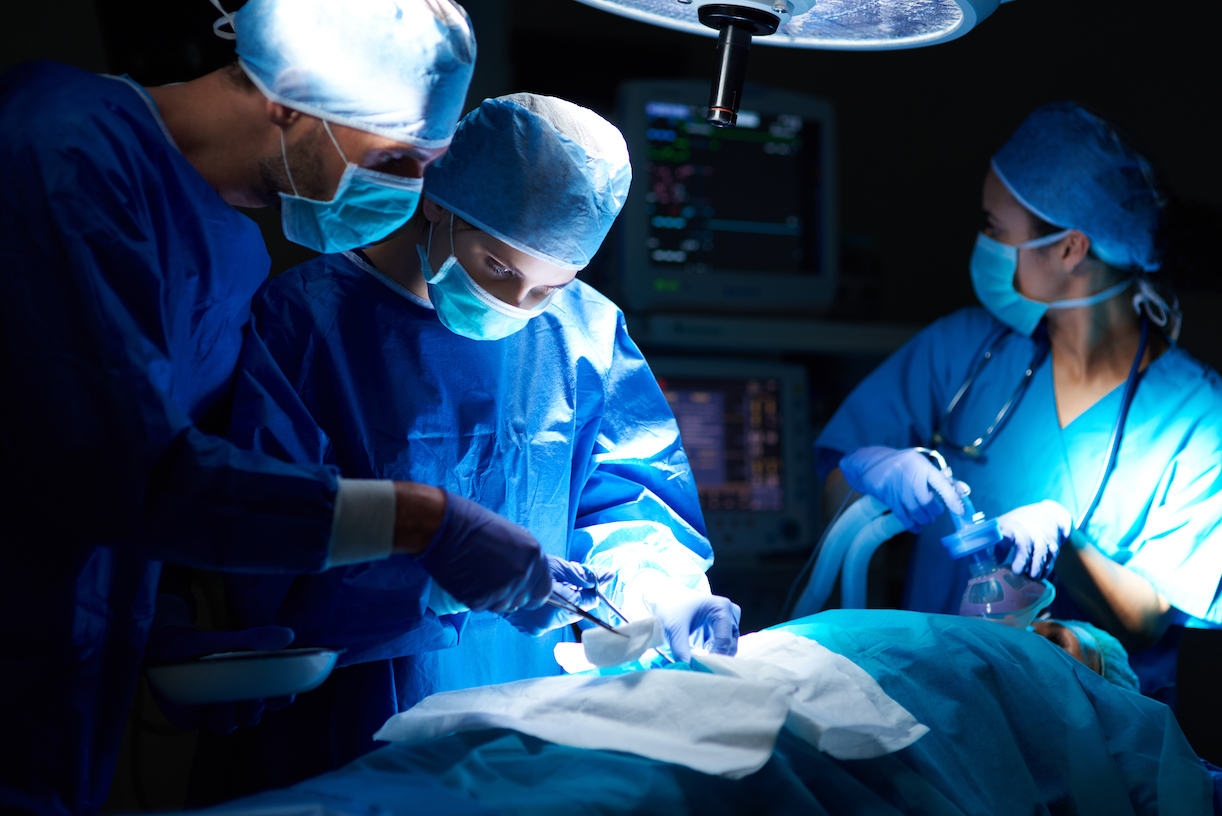
For 22 minutes, she fought for life without both blood and heart
- Health
- 16/07/2023
- 838
Semahat Gezer, a 76-year-old woman living in Istanbul, was admitted to the hospital with chest and back pain and was diagnosed with a ruptured aortic vessel. The elderly woman was urgently operated on and all the blood in her body was removed to determine the extent of the rupture. The elderly woman, whose heart and lungs did not work during the procedure, fought for life for 22 minutes.
Semahat Gezer (76), who was taken to the hospital after fainting with pain in her back and chest, was found to have a ruptured aortic artery due to high blood pressure. A computerized tomography scan revealed that the elderly woman had a tear from the jugular vein to the artery feeding her right brain, left kidney, liver, intestines and left leg. The elderly woman was urgently operated on about two and a half hours after arriving at Beykent University Hospital.
All the blood in the old woman’s body was taken to determine the size of the tear. Before starting the procedure, the patient’s body temperature was cooled to 18 degrees Celsius. In this cooling process, the heart and lungs stopped working and all the blood in the body was removed. Cardiovascular Surgery Specialist Op. Dr. Fikri Kutlay raced against time to prevent permanent damage to the body and performed a successful surgery in 22 minutes. After the operation, blood was given to the body again and a warm-up period was started. The elderly woman, who woke up 6 hours after the procedure and had an 8-day intensive care period, regained her health and was discharged.
RISK OF DEATH 2 PERCENT PER HOUR
Stating that aortic dissection is the most unsettling surgery of open heart surgery, Opr. Dr. Fikri Kutlay said, “There is a 2 percent risk of death per hour from the start of the process. Already a very important 50 to 55 percent of these patients die at the scene before reaching the hospital. Approximately 50 percent of patients who are not operated in the first 24 hours die. In this respect, our patient was brought to our hospital just in time. This is of great importance in the success of the operation.”
BODY TEMPERATURE LOWERED TO 18 DEGREES CELSIUS AND BLOOD DRAWN FROM THE WHOLE BODY
Explaining the procedure applied to the patient, Opr. Dr. Fikri Kutlay said, “Our patient had a rupture from where the carotid artery exited to the artery feeding the right brain, left kidney, liver, intestines and left leg. There was also a tear in the right artery feeding the right brain. In such surgeries, we need to work in a bloodless environment to understand the full extent of the tear. Before starting this procedure, we cooled the patient to 18 degrees Celsius. In this cooling process, the heart and lungs were not working and we completely removed the blood from the body. In this process, the patient is actually dead. In the 22-minute process, after our repairs were completed, we started the warm-up period by giving blood to the body again. Our patient woke up about 6 hours after the operation.”
FOR 22 MINUTES THE PATIENT’S HEART AND LUNGS STOPPED WORKING
Noting that the function of the stopped heart and lung was restored with a heart-lung pump, Opr. Dr. Fikri Kutlay said, “We sent blood to all organs until the patient’s temperature was reduced to 18 degrees. After the procedures we performed after the temperature reached 18 degrees, we resent the blood to the body through small pipes. After the blood was given, we performed this task with a heart-lung pump until the environment suitable for the heart and lungs to work was created. In this process, the patient’s heart and lungs did not work for about 22 minutes.”
BRAIN PROTECTED BY COOLING
Stating that they are racing against time in surgery, Opr. Dr. Fikri Kutlay said, “It is necessary to be very fast in this process. Because problems such as paralysis, kidney failure, loss of function of the liver, intestines and legs can be encountered. In this process, the brain was protected by cooling. We also need to see an oxygen saturation above 95 percent before lowering the body temperature to 18 degrees. As a matter of fact, the brain uses as little oxygen as possible. After seeing an oxygen saturation of 97 percent, we switched to a bloodless period at 18 degrees for the procedure.”
Stating that the patient will be followed up after discharge, Opr. Dr. Fikri Kutlay said, “We will examine our patient one week after discharge. Then we will continue this in monthly periods. The follow-up of dissection patients after the procedure is critical. It is necessary to follow up with tomographs whether there is a tear towards other vessels during the healing process.”
BEWARE OF HIGH BLOOD PRESSURE AGAINST AORTIC RUPTURES
Referring to the factors that cause aortic ruptures, Opr. Dr. Fikri Kutlay said, “The most important factor is the genetic infrastructure with aging. The accompanying factor is high blood pressure. It may not be noticed by the patient, but the diameter of the carotid artery begins to expand before rupture. At the same time, vascular hardening occurs. The rupture occurs with the resulting high blood pressure. In some patients, the rupture causes bleeding into the pericardium and it is not even possible to get these patients to the hospital. Such ruptures are preceded by minor symptoms such as back and chest pain. Vasodilation makes itself felt with pain. However, patients do not pay much attention to these symptoms. In this respect, health checks should be carried out to avoid such an outcome. Sugar, blood pressure and high cholesterol levels should be taken into consideration.”








